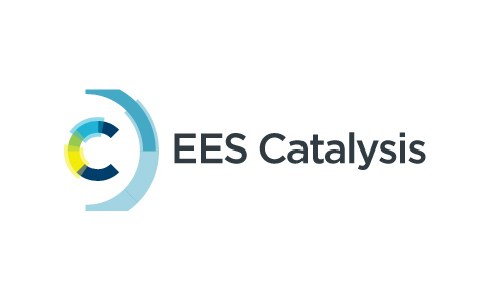30 July 2025
A team from Forschungszentrum Jülich and RWTH Aachen University has developed a novel approach for a catalyst that combines the advantages of the two most commonly used catalysis methods. The new catalyst approach is based on the metal iridium and achieved five times the activity of previous reference systems in the lab - while maintaining high stability over several days. It had previously been considered difficult to achieve both high activity and long-term stability at the same time. These findings could help to further increase the efficiency of the highly active but expensive catalyst material iridium, thus making a significant contribution to advancing the use of green hydrogen as a climate-friendly energy storage solution. The team published its results in the renowned journal EES Catalysis of the Royal Society of Chemistry.

Catalysts for the hydrogen economy
Green hydrogen plays an important role as an energy storage medium in the climate-friendly energy system of the future. To make use of it, hydrogen must be efficiently stored, transported, and released when needed. A key challenge here is to make the highly volatile gas as easy to use as possible. Carrier substances such as ammonia, methanol, formic acid, and related molecules are potential solutions. Catalysts are necessary to bind hydrogen into these molecules and release it again: they accelerate the necessary reactions or make them possible and economically viable in the first place.
Homogeneous and heterogeneous catalysis: a synthesis of two principles
The novelty of the Jülich-Aachen approach lies in combining two catalysis worlds: homogeneous and heterogeneous catalysis. Homogeneous catalysis occurs when the catalyst and the reacting substance, known as the reactant, are in the same phase - both gaseous or liquid, for example. In heterogeneous catalysis, the catalyst is a solid and the reactant is gaseous or liquid. The advantages of heterogeneous catalysis are that the catalyst and reactant can be separated cleanly and easily, reducing costs. Homogeneous catalysis, on the other hand, has the potential to be more active and selective because all atoms of the catalyst material can be active. In addition, the catalyst's structure and chemical environment can be precisely tailored for a specific reaction. In a solid, however, the atoms within the nanoparticle remain inactive, since they do not come into contact with the reactants.
Normally, the team consisting of Forschungszentrum Jülich's Institute for a Sustainable Hydrogen Economy - Catalytic Materials for Chemical Hydrogen Storage (INW-2) and RWTH Aachen University's Chair of Heterogeneous Catalysis and Technical Chemistry primarily focuses on heterogeneous catalysis. "With the new catalyst, we have tried to harness the best aspects of the other world - in our case, homogeneous catalysis - for our own," explains Prof. Regina Palkovits, who heads both INW-2 and the Aachen chair.
Highly active and easily separable
Terpyridine plays a central role here - a molecule that binds metal atoms like iridium strongly. For the researchers from Jülich and Aachen, it was crucial to integrate the terpyridine structure, which can bind iridium very stably, into a polymer. A polymer is a chemical compound consisting of many small, repeating building blocks. The result is a solid molecular catalyst (SMC). "This way, iridium can be separated from the reactant as in heterogeneous catalysis - in this case, as a component of the terpyridine polymer," explains Keanu Birkelbach, lead author of the publication. "At the same time, each iridium atom in the SMC forms a catalytically active centre, as is the case in homogeneous catalysis." This combination of higher activity and better separability is new. Iridium can be used more efficiently and also recovered. Given its high global market price, this offers great potential for savings. Iridium is currently around 50 % more expensive than gold.
Next steps: scaling up and alternative materials
According to Keanu Birkelbach, further steps could include scaling up the reactor beyond the laboratory scale and replacing the expensive iridium with a more affordable, catalytically active metal. Additional hydrogen carrier molecules could also be tested. In the lab, the team from Jülich and Aachen used the molecularly defined iridium catalyst to release hydrogen from formic acid.
Further Information
Contact Persons
- Institut für nachhaltige Wasserstoffwirtschaft (INW)
- Institut für nachhaltige Wasserstoffwirtschaft (INW)
Guido Jansen
Referent Öffentlichkeitsarbeit
- Institut für nachhaltige Wasserstoffwirtschaft (INW)








